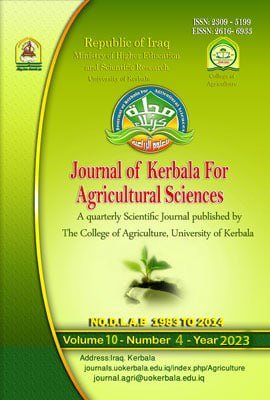Evaluation bone healing agents: radiological presentative on lidocaine and diclofenac in rabbits
DOI:
https://doi.org/10.59658/jkas.v10i4.1309Keywords:
Lidocaine hydrochloride, diclofenac, bone healing, rabbit model, radiological analysis, comparative study, intraosseousAbstract
This study aimed to assess the impact of intraosseous injections of 2% lidocaine hydrochloride and 3.75% Diclofenac on bone regeneration. Forty-five adult male rabbits of a local breed were used to create a 3.5mm hole in the proximal third of the medial aspect of the tibia using an electric drill, with continuous isotonic regular saline irrigation to prevent thermal necrosis. The rabbits were randomly divided into three groups of fifteen each (n=15): a control group without any treatment, Group 1 (Lidocaine HCl), which received a daily dose of 2% lidocaine HCl (2 mg/kg body weight) for five days post-operation (P.O.), and Group 2 (Diclofenac), which received 3.75% Diclofenac (20 mg/kg body weight). Radiographic evaluations were conducted at the end of the 7th, 14th, and 21st days P.O. The findings demonstrated accelerated bone regeneration and development in Group 1 compared to Group 2 and the control group. In conclusion, intraosseous injection of 2% Lidocaine HCl (2mg/kg B.W.) showed a stimulatory effect on bone healing, with osteogenic tissue and trabecular bone formation being visible in radiographic images at the end of the first week, indicating a more effective outcome compared to the Diclofenac and control groups.
Downloads
Published
How to Cite
Issue
Section
License
Copyright (c) 2023 Copyright (c) 2024 is the Author's article. Published by the Journal of Kerbala for Agricultural Sciences under a CC BY 4.0 license

This work is licensed under a Creative Commons Attribution 4.0 International License.
Licensing Terms
All articles are published under a Creative Commons License and will be directed to the Creative Commons Attribution 4.0 International License (CC BY 4.0) That permits use, distribution, and reproduction in any medium, provided the original work is properly cited. This license also allows the work to be used for commercial purposes.
Use by both non-commercial and commercial users
This content is licensed under a Creative Commons Attribution 4.0 International (CC BY 4.0) license, permitting use by both non-commercial and commercial users. Individual users may access, download, copy, display, and redistribute the articles to colleagues, as well as adapt, translate, and text- and data-mine the content, subject to the following conditions:
- The author's moral rights, including the right of attribution and the right to protect their work from derogatory treatment, are respected.
- Where content in the article is identified as belonging to a third party, users must ensure that any reuse complies with the copyright policies of the owner of that content.
- If the article content is reused for research or educational purposes, users should maintain a link to the appropriate bibliographic citation, including the DOI and a link to the published version on the journal's website.






